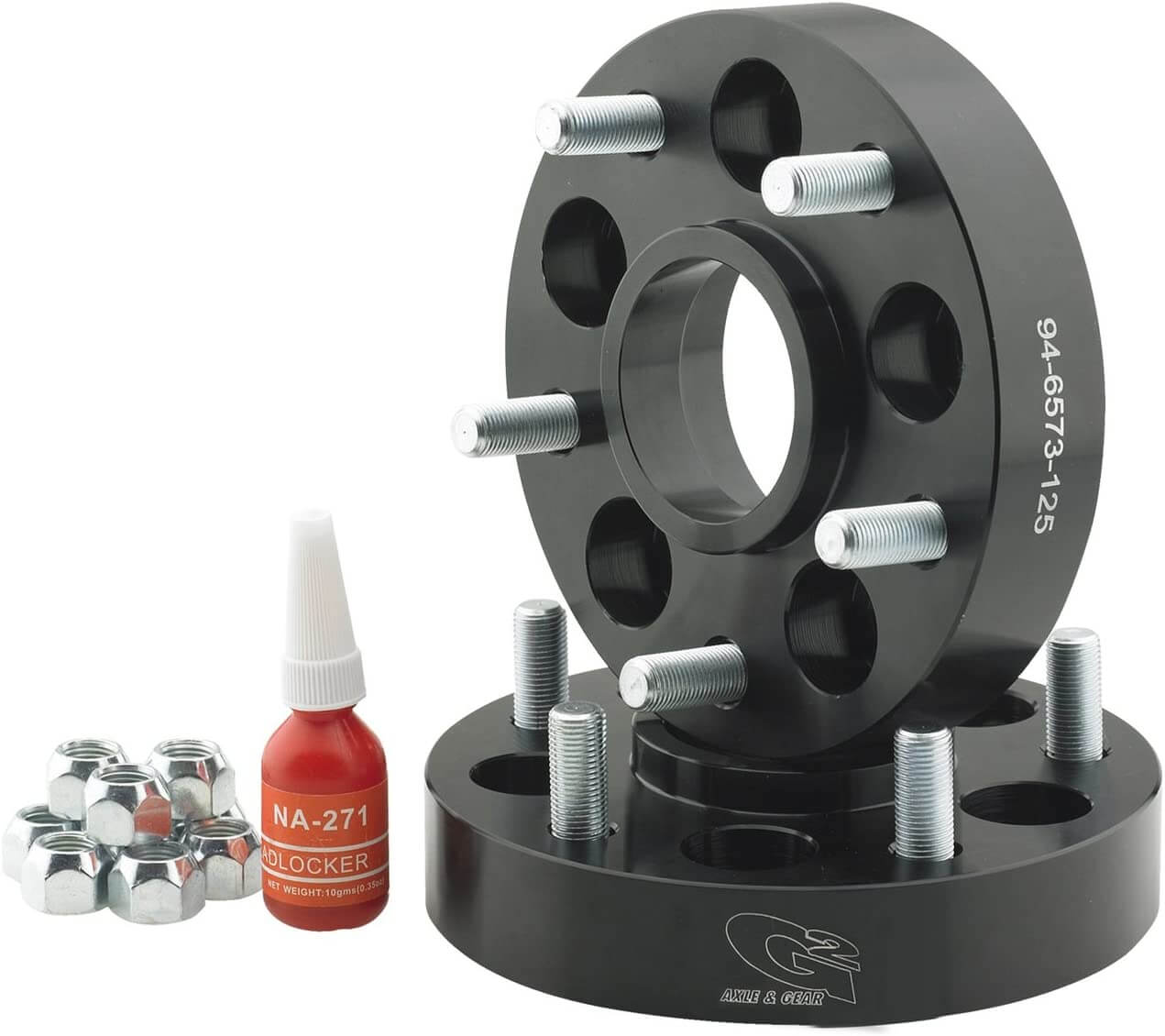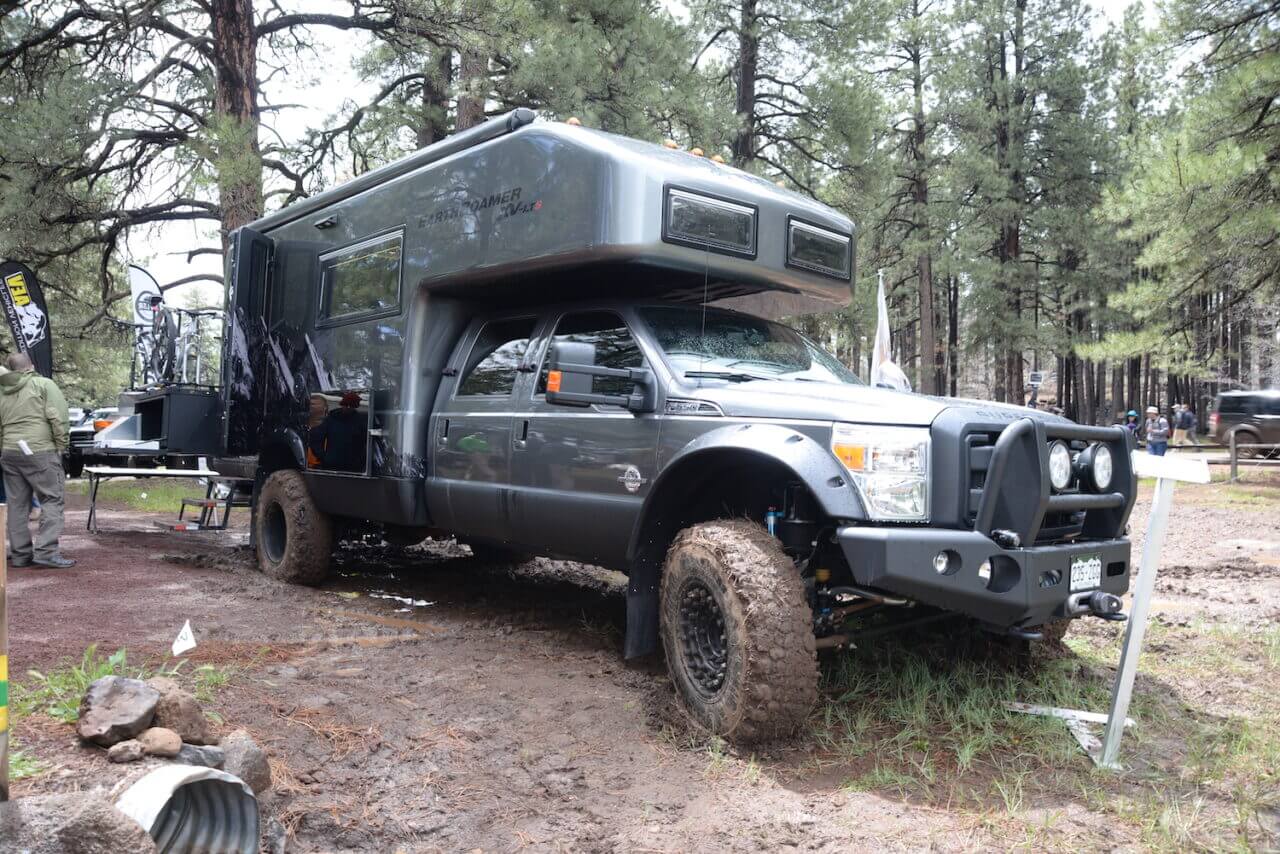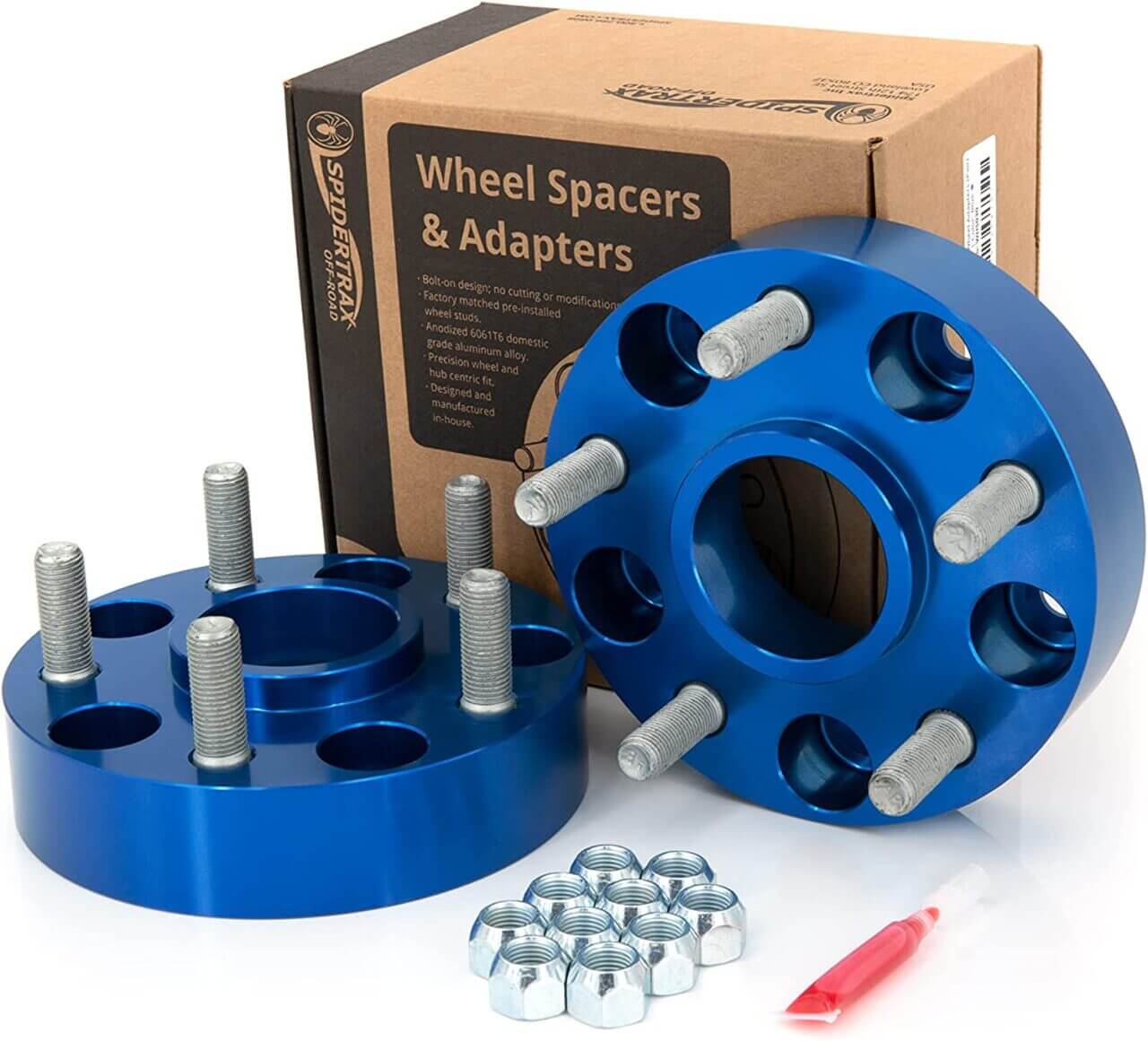Photography by John Cappa
Installing wheel spacers on your 4×4 is an inexpensive upgrade that can help keep larger than stock tires from rubbing on your 4×4 Jeep, truck or other SUV. They can also help increase vehicle stability through a wider stance. Wheel spacers are generally made from aluminum and feature press-in studs. They bolt to your existing wheel studs and effectively decrease the wheel backspacing by moving the wheels and tires outward, away from the frame and suspension. Most wheel spacers come in pairs and are 1 to 1.5 inches thick, but some are as thin as 1/4-inch or as thick as 2 inches. Which spacers you choose will depend on the amount of clearance you need. Read on to find out where wheel spacers can help you affordably fit the tires and wheels you want on your 4×4.

Most wheel spacers are made from machined aluminum and come with studs already pressed in. They are generally sold in pairs complete with lug nuts and thread locking compound.

Wheel spacers can be successfully used in low-weight lifted dualie applications to help keep the dual tires from rubbing on each other, which could potentially damage the sidewalls. However, loaded down dualie applications should avoid wheel spacer use because of the increased leverage.
Where Wheel Spacers Make The Most Sense
Wheel spacers are a perfect match for use with stock wheels and slightly larger tires. They often provide the little bit of extra clearance needed around the tire sidewalls, frame, body, inner wheel wells and suspension components. Wheel spacers can also offer extra clearance for larger aftermarket brake upgrades. Some aftermarket A-arm suspension upgrades require the extra room that wheel spacers provide. Although, you may simply fall in love with an aftermarket wheel that isn’t offered with the backspacing you need. This is where the wheel spacers will really save the day. As an added bonus, some wheel spacers are available as lug pattern adapters too, giving you even more wheel options for specific applications. And finally, lifted dualie fans with wider than stock tires will appreciate wheel spacers between the dual wheels. They create space and keep the dualie tire sidewalls from rubbing while cruising down the road.

Wheel spacers are not recommended for heavily loaded down 4x4s like overland vehicles or 3/4- and 1-ton trucks. High-speed prerunner applications should also avoid wheel spacer use. The added leverage from the wheel spacers is not ideal on these vehicles.
When Not To Use Wheel Spacers
Unfortunately, wheel spacers will apply increased leverage on the factory wheel studs. Larger tire diameters also increase this leverage. Because of this, wheel spacers are generally not recommended for heavily loaded down applications, especially on 3/4- and 1-ton trucks. However, if the heavy-duty trucks are never used to capacity, then wheel spacers might be a viable option. Prerunners and other high-speed 4x4s should also avoid the use of wheel spacers. Pounding over rough trails at speed for hours could be problematic. You don’t want to give larger than stock tires any more leverage than you have to on the wheel studs, steering, suspension and axle housings.

Wheel spacer kits can also be used to adapt different lug pattern wheels to your 4×4. Of course there are limitations to what can be adapted.
Safely Install Wheel Spacers
Installing wheel spacers is easy. It’s very similar to installing a wheel with one difference. Most wheel spacer manufacturers include thread locking compound to be used on the factory wheel studs that hold the spacers to the wheel flanges. With thread locking compound smeared on the threads you can install the wheel spacer and lug nuts. Cinch them down lightly and then torque the lug nuts to the proper spec in a crisscross pattern. The wheels will then bolt to the wheel spacer studs. Torque all lug nuts to spec and check them for tightness after the first 50-100 miles. Never stack wheel spacers for extra clearance or width. It’s unsafe to stack the wheel spacers because of the added leverage.




2